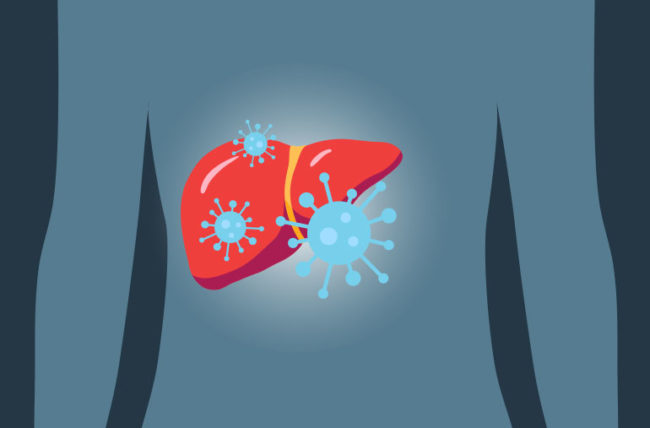Everything You Need to Know About Multiple Myeloma
Cancer is a disease of Aging. As people continue to live longer, cancer is going to become more common. For this reason, it is imperative we can recognize early signs because early detection can save your life. One specific type of cancer is called multiple myeloma. If you would like to learn more about the signs of multiple myeloma, how this condition is diagnosed, and what your treatment options are, take a look below! The sooner multiple myeloma is diagnosed, the faster treatment can begin.
Related Topics (Ads):
What Is Multiple Myeloma?
Multiple myeloma is a specific type of cancer that takes place in the plasma cells. Plasma cells are a specific category of white blood cells, which are responsible for fighting infection.
In individuals with multiple myeloma, there is a mutation in the DNA of plasma cells themselves. This causes plasma cells to grow too quickly, crowding out healthy cells. This impairs the function of certain organs throughout the body.
Why Do People Get Multiple Myeloma?
The exact cause of multiple myeloma is unknown. There are numerous potential causes of DNA mutations. Plasma cells start in the bone marrow, where they grow. If plasma cells have DNA mutations, they may grow too quickly in the bone marrow, crowding out healthy tissue. Instead of making antibodies, plasma cells will produce abnormal proteins that can lead to blood vessel and kidney damage.
Who Gets Multiple Myeloma?
Multiple myeloma is most common in elderly individuals, mostly in individuals who are over 60 years of age. Multiple myeloma is also more common in people who are overweight and who are male.
What Are the Early Warning Signs of Multiple Myeloma?
The sooner multiple myeloma is diagnosed, the faster it can be treated. In order to ensure a favorable prognosis, everyone needs to know the warning signs of this condition. Some of the most common symptoms include:
Related Topics (Ads):
• The development of nausea and vomiting
• Constipation and other signs of gastrointestinal distress
• Bone pain, which usually appears in the spine or chest area
• Loss of appetite
• Significant, unexplained, or unintentional weight loss
• Bouts of mental confusion and disorientation
• Fatigue and tiredness
• Excessive degrees of thirst despite drinking water regularly
• The development of frequent infections
• Shooting pains, weakness, or numbness in the legs
Anyone who has these symptoms needs to seek care from a medical professional as soon as possible.
How Do Doctors Diagnose Multiple Myeloma?
The diagnosis of multiple myeloma starts with looking for the symptoms above. If someone presents with the symptoms above, doctors may order other tests to confirm the diagnosis. Even though your doctor may order screening tests on a regular basis, exams for multiple myeloma usually are not offered unless patients present for the symptoms above.
There are several tests that the doctor could order to diagnose multiple myeloma. Some of these exams include:
• A routine blood test to look for increases white blood cell counts, which could be a sign of multiple myeloma
• Imaging scans, such as x-rays or MRIs, which may reveal issues with the spine, back, or other bones
• A specific test called bone marrow sampling, which is used to look specifically for myeloma cells located in the bone marrow
• A urine test, which will look for signs of abnormal proteins that could be produced by the multiple myeloma cells
These are just a few of the many tests that a doctor could order to not only diagnose multiple myeloma but also to locate areas of the body where these multiple myeloma cells could have spread to. This is commonly referred to as staging or grading multiple myeloma.
Related Topics (Ads):
How Is Multiple Myeloma Treated?
In individuals who have been diagnosed with multiple myeloma, there are several treatment options available. The exact treatment will depend on the severity of the condition. For example, individuals who have stage 1 multiple myeloma may not require any treatment at all unless they have symptoms.
On the other hand, those who have been diagnosed with stage 2 or stage 3 multiple myeloma may require a comprehensive treatment regimen.
Some potential treatment options include:
• Biological Therapy: Biological therapy refers to specific medications that are used to fight multiple myeloma cells. A few examples include thalidomide, pomalidomide, and lenalidomide.
• Targeted Medications: There are also medications that have been specifically designed to Target abnormal classes of cancer cells. Depending on the exact type of multiple myeloma, these medications could be used.
• Chemotherapy and Radiation: A mainstay of cancer treatment, chemotherapy is designed to kill cells that grow quickly. Radiation is designed to kill cancer cells using energy beams.
This could be used as a part of the treatment regimen.
In some situations, a bone marrow transplant could also be recommended.
Seek Medical Care for Multiple Myeloma
Anyone who is experiencing signs or symptoms of multiple myeloma must seek medical care as quickly as possible. The sooner this condition is diagnosed, the better the prognosis will be.
Related Topics (Ads):
Sources
https://www.mayoclinic.org/diseases-conditions/multiple-myeloma/symptoms-causes/syc-20353378
https://www.cancer.org/cancer/multiple-myeloma/about/what-is-multiple-myeloma.html
https://www.webmd.com/cancer/multiple-myeloma/multiple-myeloma-symptoms-causes-treatment#1







